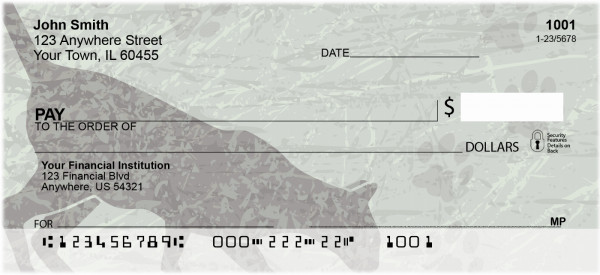Buy personal checks with Alley Cats designs

 Alley Cats Personal Checks – $22.99 Show your support for animal welfare with Alley Cats Personal Checks. These checks feature four rotating images of cat paw prints and cat silhouettes with blue and pink backgrounds. |
Alley cats, often found roaming the streets and back alleys of urban environments, are a common sight in many cities. These felines are typically unsocialized or semi-feral and may have had little or no human contact, which makes them a fascinating subject to explore.
Origins and Spread
The ancestors of today’s alley cats were domesticated wild cats that eventually found their way into human settlements.
As urban areas expanded, so did alley cat populations, thriving in environments with ample food sources and hiding places.
Lifespan
The lifespan of alley cats varies greatly depending on factors such as access to food, shelter, and healthcare. While domesticated pet cats can live for 12 to 15 years or more, alley cats typically have shorter lifespans due to the challenges they face in urban environments.
However, through TNR programs, responsible feeding practices, and community involvement in providing care, we can improve their chances of survival and help extend their lifespan.
By addressing the factors that impact their longevity, we can contribute to a healthier, safer life for these resilient felines.
Physical Characteristics and Behavior
Alley cats come in various shapes, sizes, and colors, but they all share a common trait: adaptability.
These resourceful creatures have learned to navigate the urban landscape and often form feral cat colonies for protection and companionship. Their social behaviors and survival skills make them well-suited for city living.
Health Challenges and Risks
Unfortunately, alley cats face numerous health challenges, including diseases, malnutrition, and injuries. With limited access to proper food and shelter, their lives can be difficult and often dangerous.
A city environment presents various hazards, from traffic to encounters with other animals or humans.
Role in Urban Ecosystems
Alley cats play a significant role in urban ecosystems, providing benefits such as natural pest control. However, they can also pose concerns, including potential risks to public health and the well-being of native wildlife populations.
Understanding their impact helps us better manage their presence in our cities.
Human Interaction
Many compassionate individuals and organizations work to help alley cats through trap-neuter-return (TNR) programs, feeding, and providing shelter.
These efforts not only improve the cats’ lives but also help control their population growth, ultimately leading to a healthier coexistence between these cats and city dwellers.
The Importance of Trap-Neuter-Return (TNR) Programs
Trap-Neuter-Return (TNR) programs play a vital role in managing alley cat populations and improving their quality of life.
By humanely trapping, sterilizing, and releasing these cats back into their territories, TNR helps reduce the number of kittens born on the streets and prevents the spread of diseases among the feline community.
Educating the Public
Raising awareness and understanding of alley cats is essential to fostering empathy and support for their welfare.
Educating the public about the challenges these cats face and the actions that can be taken to help them promotes responsible pet ownership and encourages community involvement in their care.
Promoting Adoption and Foster Programs
For some alley cats, particularly kittens or those with a friendly disposition, adoption, and foster programs can provide a second chance at a loving home.
Rescue organizations often work tirelessly to socialize and rehabilitate these cats, preparing them for adoption into permanent homes. This not only benefits the individual cats but also helps reduce the overall alley cat population.
Local Governments and Policies
Local governments play a crucial role in addressing alley cat welfare through policies, regulations, and support for TNR programs and other initiatives.
By enacting and enforcing responsible legislation, municipalities can help ensure the humane treatment of alley cats and promote a balanced coexistence between these felines and human communities.
Conclusion
Alley cats are an integral part of urban landscapes, and understanding their unique challenges and needs is crucial for their well-being. Through education, TNR programs, adoption efforts, and supportive policies, we can work together to create a compassionate environment where alley cats and humans can coexist harmoniously.